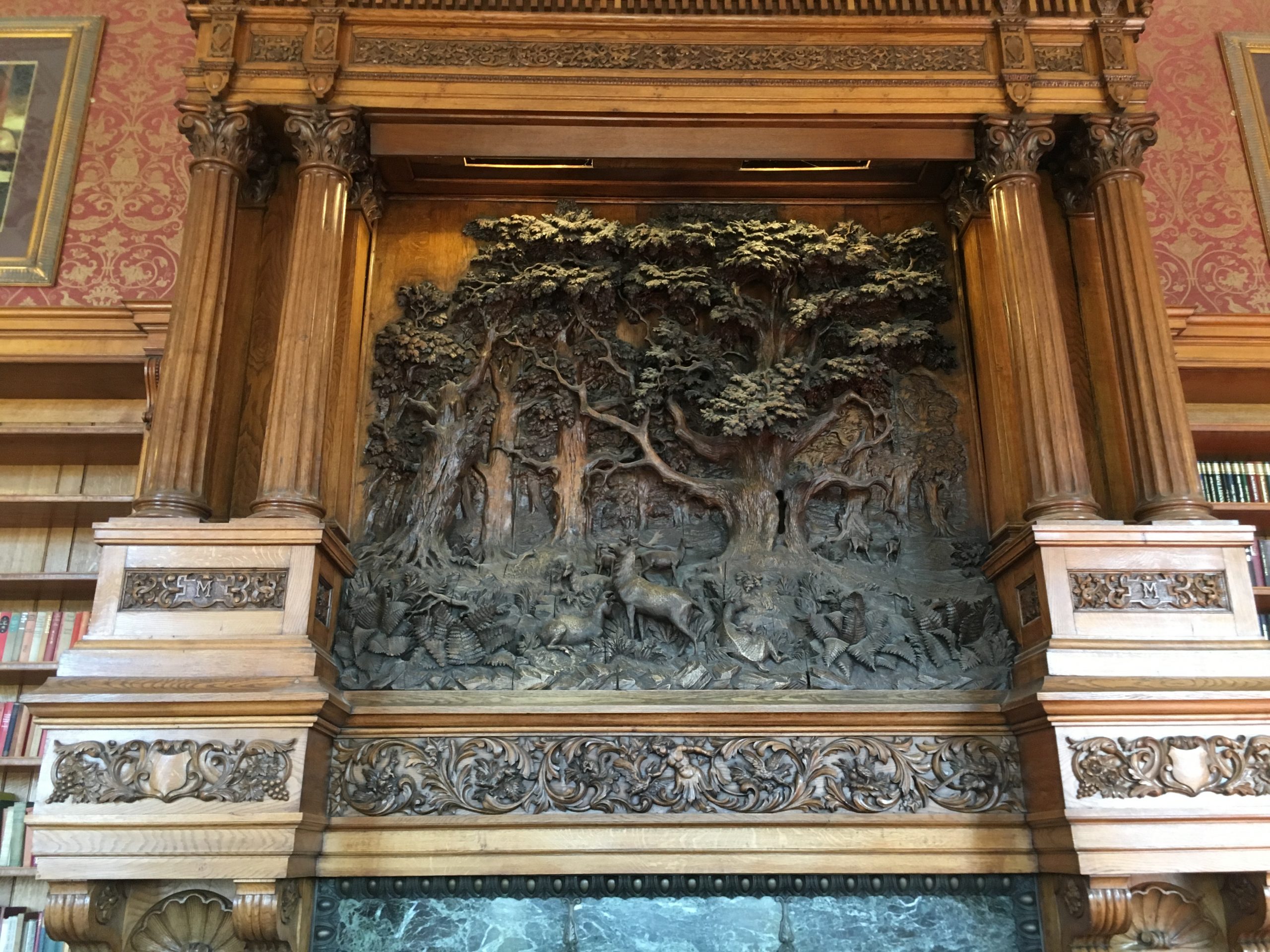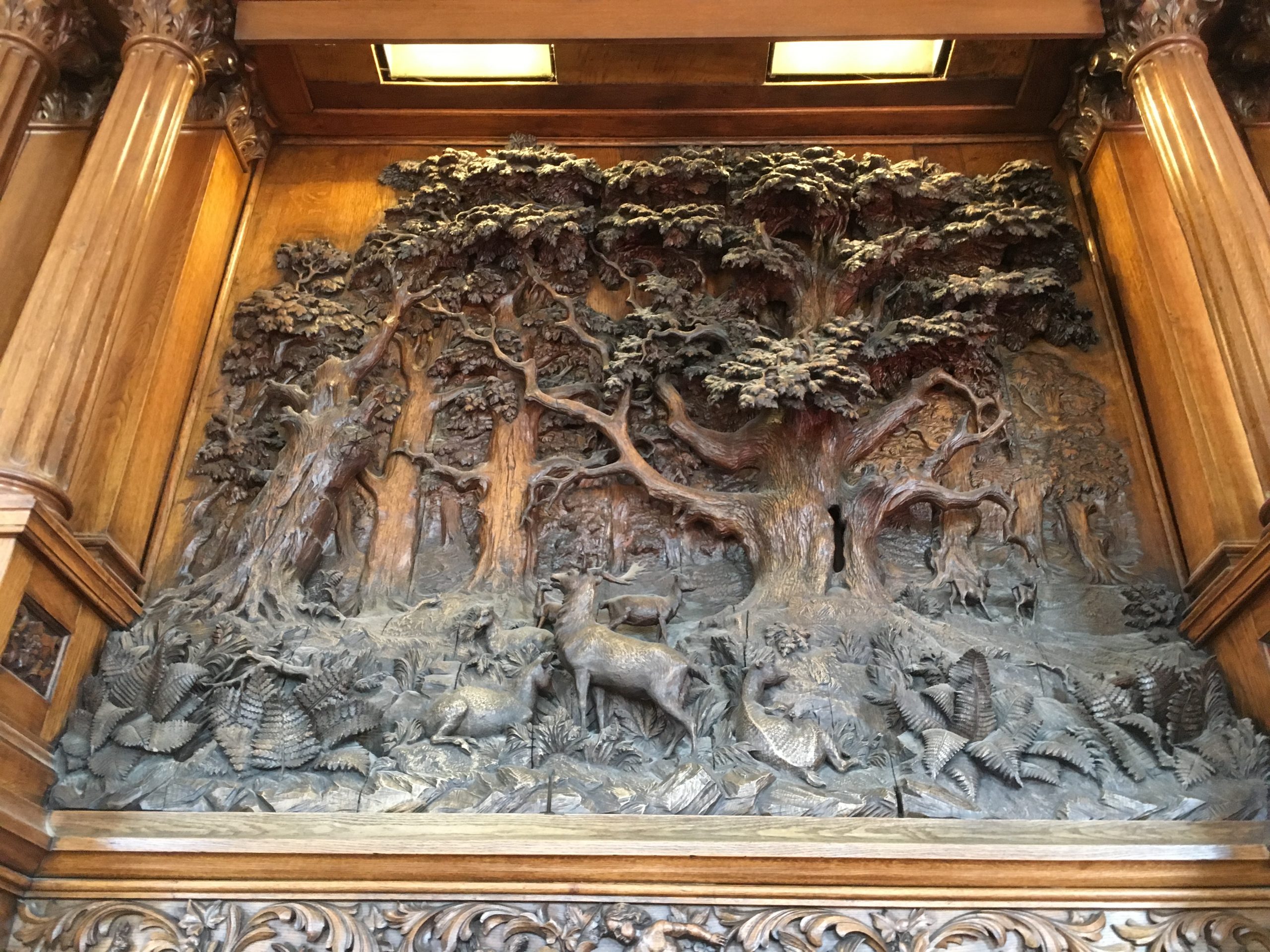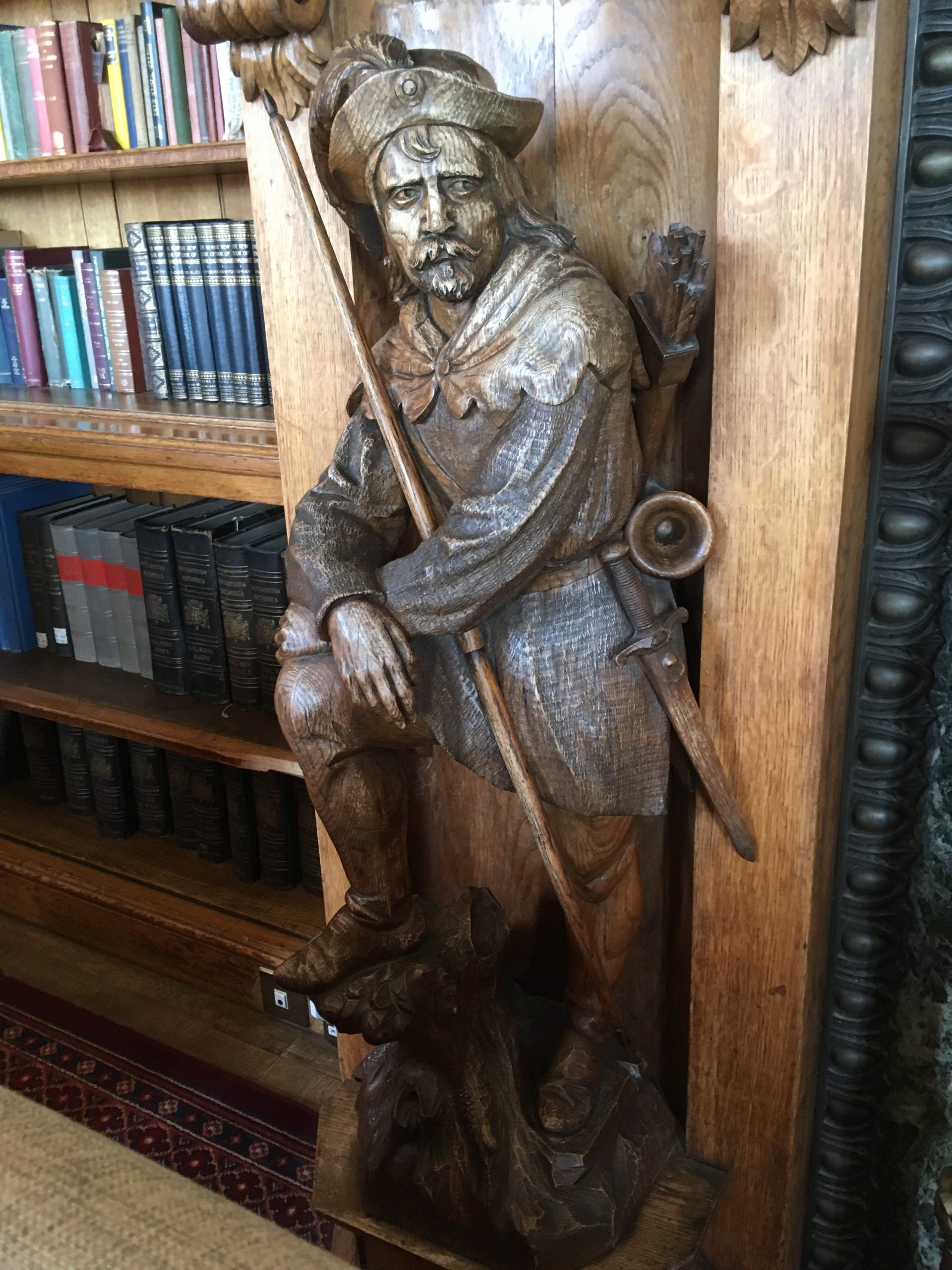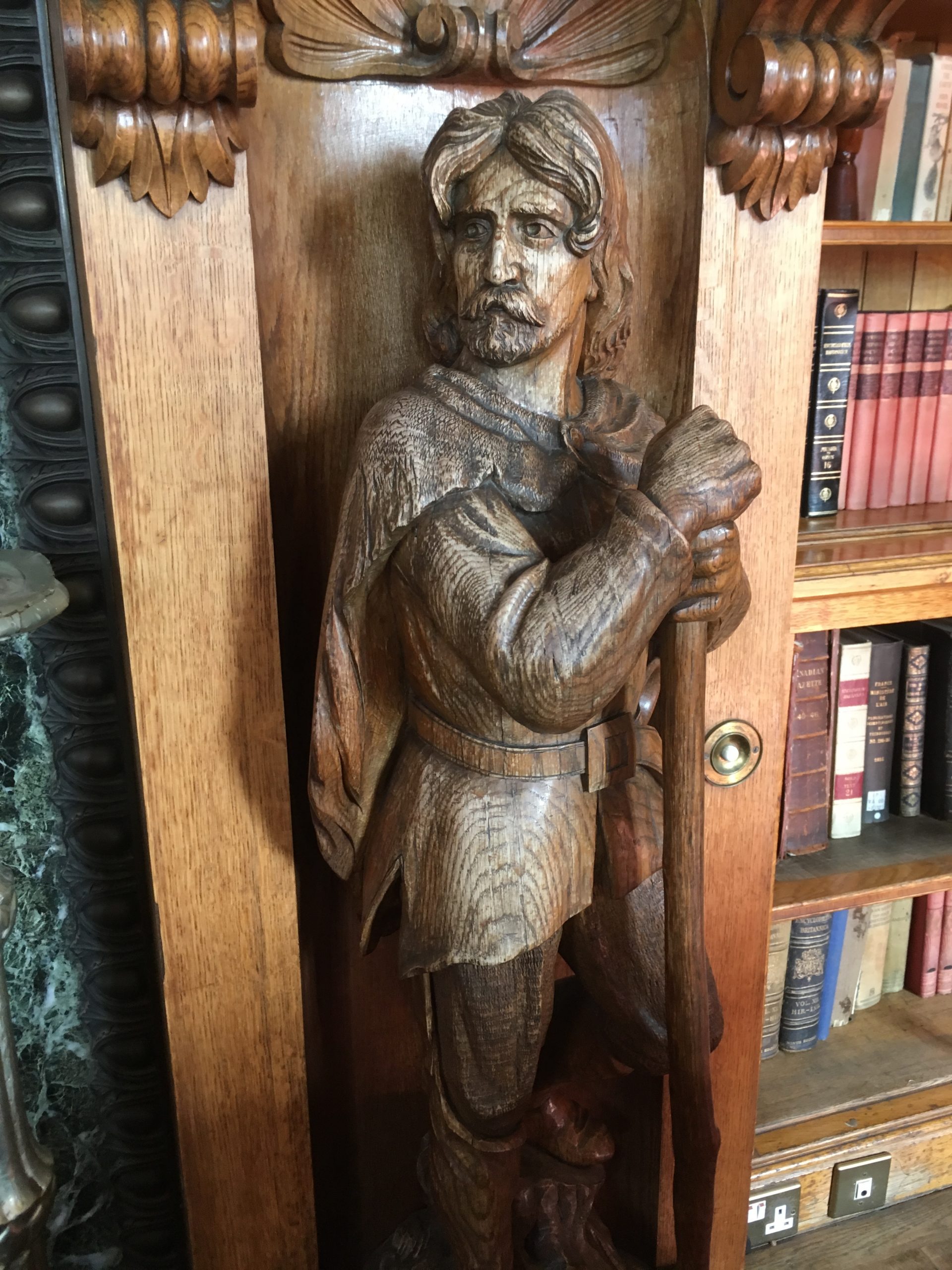The Tudsbury family has had a long connection with this Church and it is possible to trace the family back to 1627 using the Perlethorpe parish registers which record: “Richard Tudsbury and Mary were married on 16th August 1627”.
At that date they were working on the farm but during the nineteenth century the family became involved in working with wood and produced an outstanding woodcarver, Richard Tudsbury, who exhibited at the Great Exhibition in London in 1851. His gravestone is to be seen in Edwinstowe churchyard, south-east from the main door.

Richard John Tudsbury,Richard, wood carver especially of Sherwood oak carved many piece of birds, animals, leaves and flowers. Richard is reported as the carver of the magnificent chimney-piece, which is of Birkland oak, and can be seen in the library at the Thoresby Hall, and is of a style adopted in the original wood carving to be found in the church. (Other key references, including some of the old guide books for the Hall indicate a Robert Tudsbury, and others a Robinson of Retford and also one from Newark, executed the work. These are now however thought to be incorrect.) A trade-card with an illustration of the chimney-piece, was used by a Garrard Robinson of Newcastle, and a report by a local Newcastle journalist, at the time, expounding its excellence after seeing the piece in the carver’s workshop, would appear to confirm its origin. However, Tudsbury was commissioned to provide the carving on the pendants for the roof of the Great Hall at Thoresby Hall, and a pair of sideboards within the dining room as well as others in Rufford Abbey, and, indeed smaller pieces in some of the houses of Edwinstowe. His greatest triumph was in 1862 when one of his carvings won a prize medal at the Great Exhibition in London.
His youngest son, Walter Albert, became a well-known local artist, painting mainly woodland scenes. There are still members of this family living in Nottinghamshire, but alas, none remain locally. The local artist WA Tudsbury carved the oak lectern, which can be seen in St Mary’s church in the adjoining parish of Edwinstowe.
This carved firescreen photograph was provided by the family.

Whites Directory, dated 1853, notes Richard Tudsbury sen., joiner; Richard Tudsbury jun., joiner; and William Tudsbury, cabinet maker, carver and joiner, as residents of Edwinstowe. Similarly the 1851 Census also lists; Richard Tudsbury 38yrs and Richard John Tudsbury 31 yrs. The 1922 edition, Kelly’s Directory, lists: Tudsbury Bros., Bullivant Row – Carvers in wood.
These latter facts may be seen to confirm the possibility of the Tudsbury brothers executing much of the original carving work in St John’s Church, as they were operating during the period when they were produced. Acknowledgment – Southwell & Nottingham Church History project

Modelled in Snow after Edwinstowe Snowstorm 6th March 1909

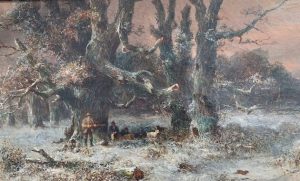
Sherwood Forest – Artist Tudsbury Couresty of Julie and Pat relatives of the Tudsbury family
As well as many Postcards produced by the family, W A Tudsbury, he had a successful photographic business.
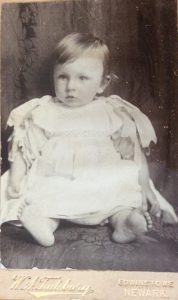
He had many skills as shown in this newspaper article in the;
The Rontgen Rays in the Dukery
“A short time ago a lad living at Edwinstowe had his foot pinned under the roller used for rolling the cricket ground there. The swelling resulting was so great that the medical man called in to attend the lad was completely baffled, being unable to locate the injury. Mr Tudsbury, photographer of Edwinstowe, suggested that a photograph should be taken by means of the Rontgen rays. This was successfully accomplished by Mr Tudsbury, clearly showing the injuries and enabling the application of suitable medical treatment.”
Sheffield Daily Telegraph 19 June 1896
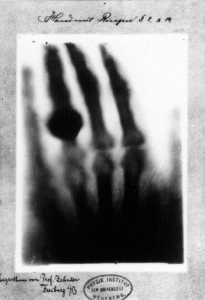 The potential medical applications to help humanity is why Wilhelm Roentgen, inventor decided not to patent X-rays. The technology was quickly put to use by both the medical community and the general public. In the book Naked to the Bone, Bettyann Kelves describes “X-ray slot machines” that let customers see the bones in their hands. Because the parts needed to create X-rays were so easy to obtain, people could create the images in their homes. This probably what Tudsbury did as it was a lucrative business to take bone photographs at that time. Not safe but they did not realise this at the time.
The potential medical applications to help humanity is why Wilhelm Roentgen, inventor decided not to patent X-rays. The technology was quickly put to use by both the medical community and the general public. In the book Naked to the Bone, Bettyann Kelves describes “X-ray slot machines” that let customers see the bones in their hands. Because the parts needed to create X-rays were so easy to obtain, people could create the images in their homes. This probably what Tudsbury did as it was a lucrative business to take bone photographs at that time. Not safe but they did not realise this at the time.
Courtesy Wikipedia
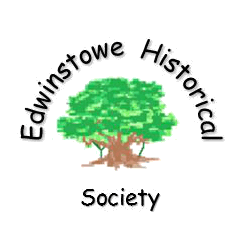 Edwinstowe Historical Society
Edwinstowe Historical Society